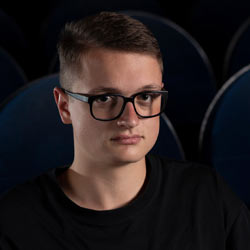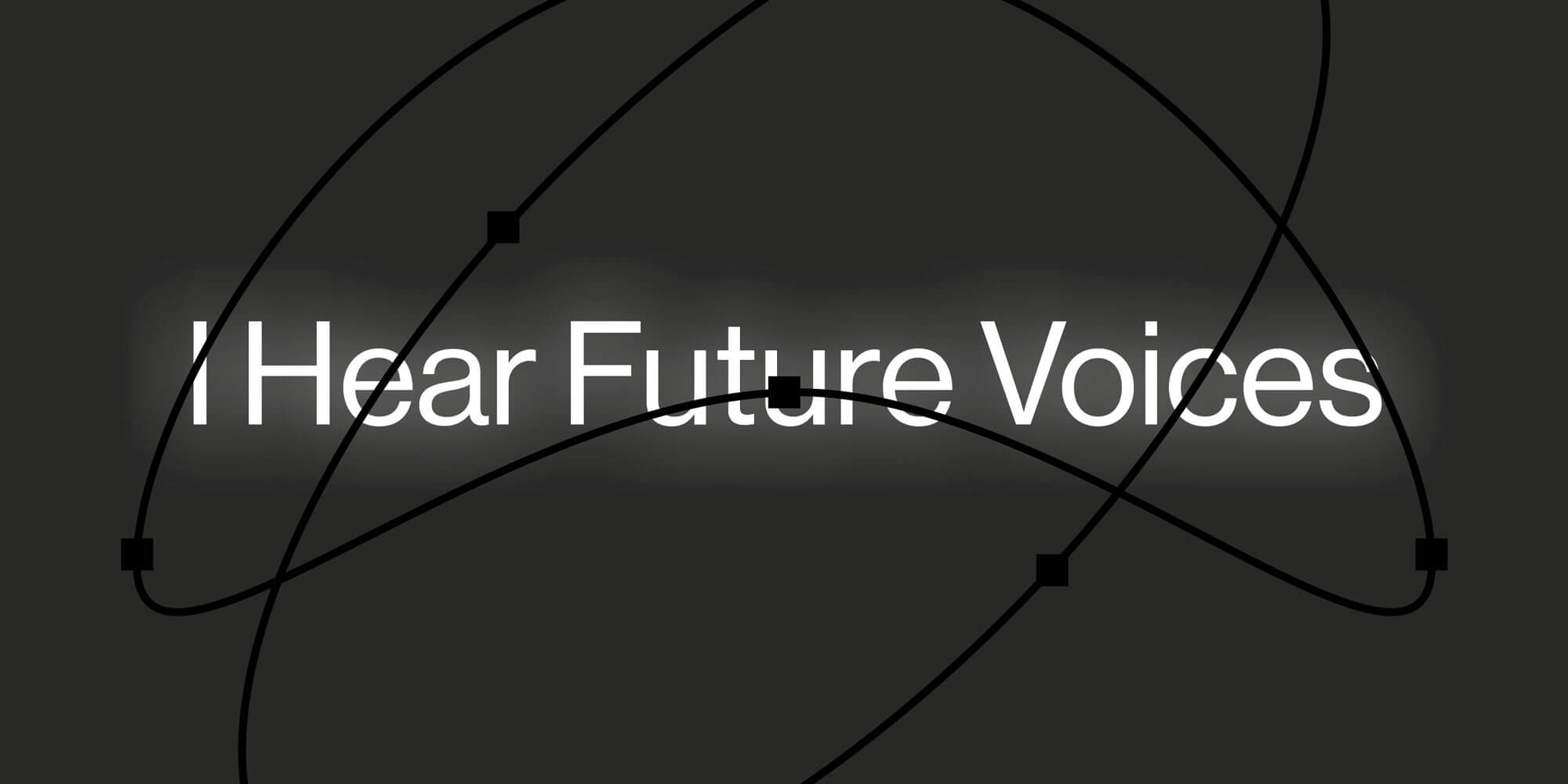I Hear Future Voices hinterfragt den Einfluss von KI-basierten Sprachassistenzsystemen auf das menschliche Leben, sowohl bezüglich der Gegenwart als auch der nahen Zukunft. Gestützt auf wissenschaftliche Forschung bietet die Installation einen künstlerischen Einblick in die alltägliche Nutzung von Sprachassistenzen. Gepaart mit einer unverwechselbar intimen, spielerischen Ästhetik katapultieren die drei konstitutiven Teile dieses Projekts den Betrachter in disparate Realitäten zwischen Utopie und Dystopie. Während des Ars Electronica Festivals wird I Hear Future Voices auf drei zusammenhängenden Bildschirmen präsentiert und von einer informativen, forschungsbasierten Installation begleitet. Das Ziel ist es, Sprachassistenztechnologien durch eine kritische Linse zu betrachten, darüber nachzudenken, was menschenzentrierte KI wirklich bedeutet und Probleme und Konsequenzen aufzuzeigen, die mit der Nutzung von Sprachassistenzsystemen einhergehen. I Hear Future Voices ist aus der Zusammenarbeit der JKU Linz Psychologiestudentin Nives Meloni und dem Filmemacher Julian Pixel Schmiederer entstanden.
Biographies
 Julian Pixel Schmiederer is an artist and film director. In 2016 Julian moved to Graz to attend the Ortweinschule Graz for Film and MultimediaArt. Since then, he has produced four short films which have gained international recognition at several festivals.
Julian Pixel Schmiederer is an artist and film director. In 2016 Julian moved to Graz to attend the Ortweinschule Graz for Film and MultimediaArt. Since then, he has produced four short films which have gained international recognition at several festivals. Nives Meloni loves combining art and science to address the societal and individual impacts of AI. She studies psychology (MSc) with specification in technology where her main interests are gender equity and diversity in smart technologies.
Nives Meloni loves combining art and science to address the societal and individual impacts of AI. She studies psychology (MSc) with specification in technology where her main interests are gender equity and diversity in smart technologies.I Hear Future Voices Exhibition:
Concept & Idea: Nives Meloni, Julian Pixel Schmiederer
Graphics: Laurenz Hintermayer
Texts: Nives Meloni
Hosting Institute: LIT Robopsychology Lab
I Hear Future Voices Film:
Werner Biermeier
Mieke Schymura
Michael Edlinger
Ines Maria Winklhofer
Directed by
Julian Pixel Schmiederer
Producer
Nives Meloni
Director of Photography
Thomas Guggenberger
Written by
Thomas Barthelmeus
Mariana Jukica
Julian Pixel Schmiederer
ROLLER Credits
MiShi
Jona Moro
Josie
Emelie Oppelt
House
Lion Binder
Edward´s wife
Miriam Tsion Helminger
Assistant Directress
Bianca Amberger
1st Assistant Camera
Nick Unger
2nd Assistant Camera
Leo Breid
Production Sound Mixer
Lennard Fuchs
Matei Balasoiu
Christi Iorga
Set Design
Viktoria Schindler
Set Design
Leonie Wimmer
Gabriela Hutter
Hair and Make-up
Marietta Dang
Costume
Nives Meloni
Full Look Future Helena: Christina Seewald
Lighting Technician
Sina Lang
Anna Fachbach
Anne Hasenhüttel
Editor
Johannes Rass
VFX
Simon Eberl
Color Grading
Michael Seidl
Music Composer
Alexander Grumeth
Gabriel Vitel
Sound Design and Mix
Julian Pixel Schmiederer
Mixed at
Stress Studio Graz
Graphics
Laurenz Hintermayer
Catering
Blatt & Blüte
In cooperation with
JKU Linz
LIT Robopsychology Lab and Prof. Martina Mara
Ars Electronica Festival
Supported by:
Land Oberösterreich
Installation Sources
1. Voice Assistants use voice recognition, speech synthesis, and natural language processing (NLP) [1]
2. Voice Assistants like Siri, Alexa, Google Home, and Cortana use AI (Artificial Intelligence) to recognize and respond to voice commands [1]
3. Worldwide there were 205 million installed smart speakers in 2019 [2]
4. It is to be expected that Voice Assistants will soon become digital assistants that can read emotions [3]
5. Most Voice Assistants have female names and voices [3]
6. The number of Voice Assistants will increase to approximately 8.4 billion units globally by 2024. A number larger than the world’s population [5]
7. The submissiveness and passivity of feminized Voice Assistants raise concerns about the enhanced association between „woman“ and „assistant“ [3, 4]
8. It is a small, mostly male segment of society that is developing Voice Assistants – and bringing in their preferences, humor, and ultimately potentially stereotypical ideas [3]
9. Due to the data that Voice Assistants are fed with, not every dialect or accent is understood equally good by the devices [6]
10. The media equation theory states that humans interact with computers in the same way they interact with each other [7]
11. Therefore, there could be a behavioral transfer from human-machine interaction to human-human interaction [7]
12. An alternative to female voices is a voice that speaks between 145Hz and 175Hz and thus cannot be assigned to gender [3]
1. Dev, A., Agrawal, S. S., & Sharma, A. (Eds.). (2022). Artificial intelligence and speech technology: Third International Conference, AIST 2021, Delhi, India, November 12–13, 2021, revised selected papers. Springer.
2. Smart speakers global market report 2022. (2022, März 23). ReportLinker. https://www.globenewswire.com/news-release/2022/03/23/2408568/0/en/Smart-Speakers-Global-Market-Report-2022.html
3. West, Kraut, Ei Chew, M., Rebecca, Han. (2019). I’d blush if I could: Closing gender divides in digital skills through education. UNESCO. https://unesdoc.unesco.org/ark:/48223/pf0000367416.page=1
4. Moradbakhti, L., Schreibelmayr, S., & Mara, M. (2022). Do Men Have No Need for “Feminist” Artificial Intelligence? Agentic and Gendered Voice Assistants in the Light of Basic Psychological Needs. Frontiers in Psychology, 13, 855091. https://doi.org/10.3389/fpsyg.2022.855091
5. Smart speakers global market report 2022. (2022, März 23). ReportLinker
https://www.globenewswire.com/news-release/2022/03/23/2408568/0/en/Smart-Speakers-Global-Market-Report-2022.html
6. Ike, C., Polsley, S., & Hammond, T. (2022). Inequity in Popular Speech Recognition Systems for Accented English Speech. 27th International Conference on Intelligent User Interfaces, 66–68. https://doi.org/10.1145/3490100.351645
7. Reeves, B., & Nass, C. I. (1996). The media equation: How people treat computers, television, and new media like real people and places. Center for the Study of Language and Information; Cambridge University Press.





